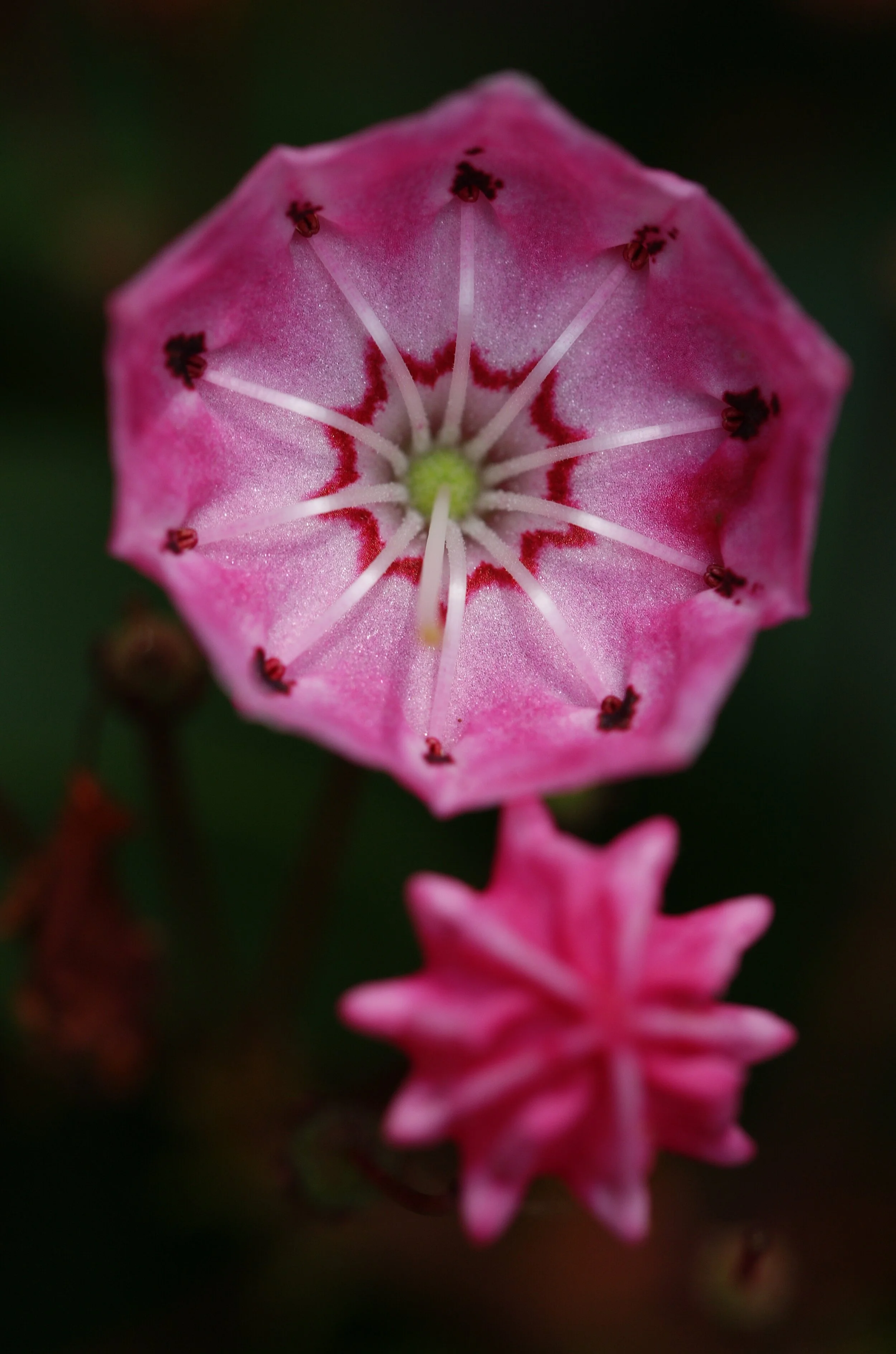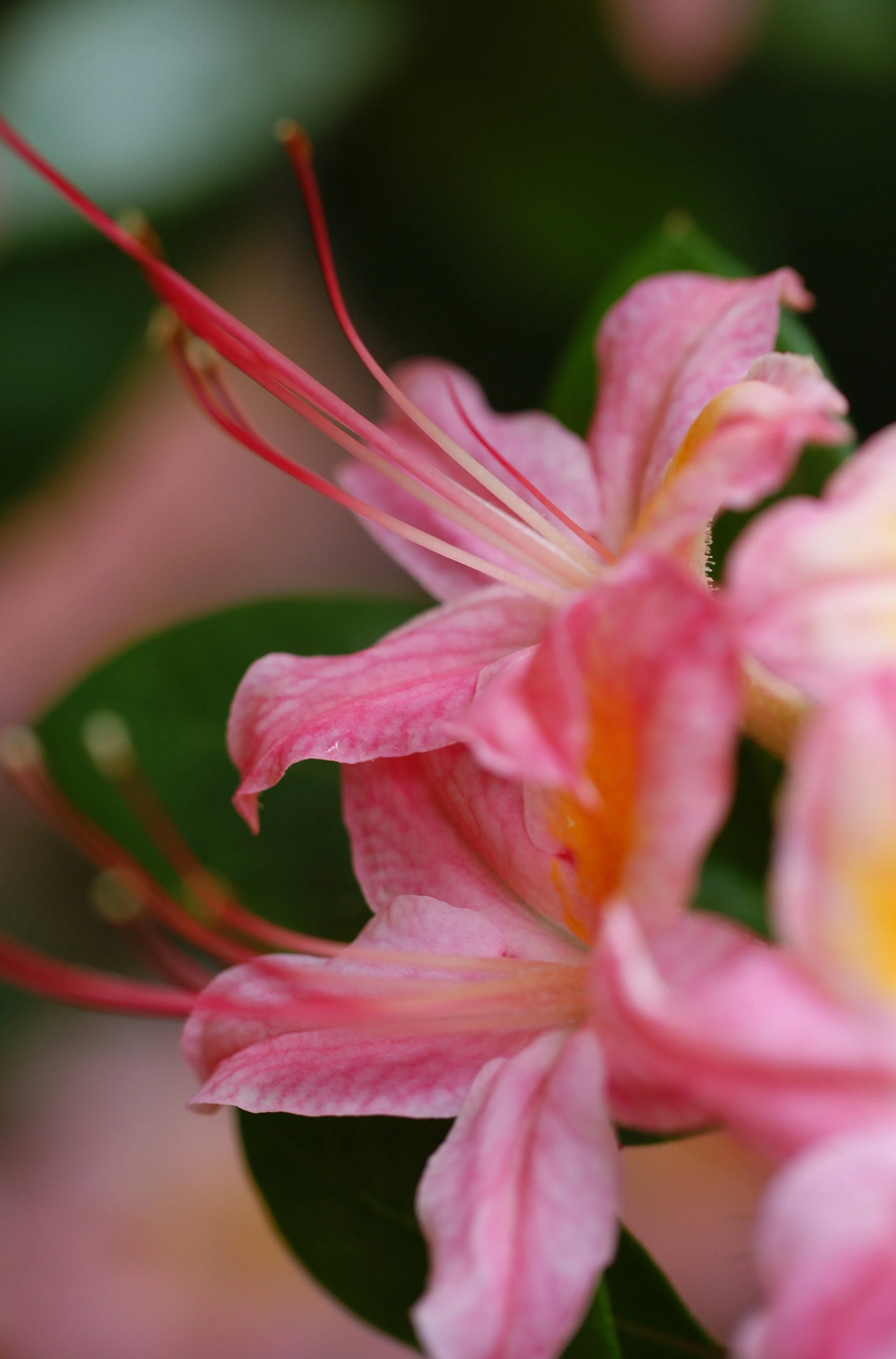Our Garden
The island of Tasmania is the home of one of the world's great rhododendron gardens - a botanical paradise thriving in the cool, moist climate of Australia's smallest state.
Thanks to Multicap Tasmania, you can take a Virtual Tour here
It is a gem of a site, running down a steep hillside to the Emu River and looking out over forest gum and blackwood trees to the rich chocolate soil and lush green grass of farmlands on the other side of the river.
Botanically speaking, fortune smiles on such vision in Tasmania. Amazingly, plants which originated anywhere from the icy Himalayas to tropical New Guinea and across the Pacific to the Americas adapt willingly to the moderate climate and usually tranquil conditions of their new hillside home.
L R.davidsonianum R R.concatenans
On Tasmania's North-West Coast, a number of rivers flow through deep valleys of rich volcanic soil into the sea on either side of the small regional city of Burnie. The Emu River is one of them. The valley through which it finds its way to Bass Strait is certainly deep and steep at the site of the garden, but it also provides protection from frost and prevailing winds. It was unsuitable for modern farm cultivation and had become a jungle of native and introduced plants, masses of blackberry bushes among them. Discouragingly, yes, but the picturesque pastures of the farming district of Stowport across the river are indicative of the quality of soil throughout the area.
Considerable time has been spent in determining how best to develop the site. The area is relatively small but has immense potential to develop a unique garden because the climate is so benign. There can be few places in the world where, with suitable soils and adequate rainfall for the growing of rhododendrons, the temperature stays within the range of 10 to 20 degrees Celsius. These conditions are ideal for the species especially maddenis from the lower areas in the Himalayas.
Rhododendrons are native to the low to mid-latitudes of Asia, Europe, North America and Australia, and can be found from sea level up into high mountainous regions. Depending on where a species originated and what altitude, it may be evergreen, deciduous or somewhere in between.
While Rhododendrons are spread over the tropical latitudes of four continents, there are well-defined hot-spots of diversity and the genus only grows in areas of good rainfall and in slightly acidic soils. The Himalayan mountains can be said to be the centre of rhododendron diversity and may be where the genus originated.
L Platypus (Ornithorhynchus anatinus) R Echidna (Tachyglossus aculeatus setosus) - both are from the Monotremata family. There are only five species of monotreme in the world - the platypus and four species of echidnas (one lives in the New Guinea highlands and is named after Sir David Attenborough).
L Australasian Grebe (Tachybaptus novaehollandiae) R Scarlet Robin (Petroica boodang)
Our Garden is also home to a diverse array of wildlife, including platypus, echidnas, and a variety of birds, frogs and snakes. Early morning walks around our Garden in warmer months can be rewarded with sightings of a platypus feeding around the edges of our lakes, ambient birdsong from Beautiful Firetail Finches (Stagonopleura bella), Rufous Whistler (Pachycephala rufiventris) and Green Rosellas (Platycercus caledonicus). If you look up, you might spot an endangered Wedge-Tailed Eagle (Aquila audax fleayi) flying overhead.
L Southern Brown Tree Frog (Litoria ewingii) R Tiger Snake (Notechis scutatus)
There a two different species of frogs in our Garden, one being the the Southern Brown Tree Frog (Litoria ewingii) pictured above. The ‘bonk-bonk’ sound heard nearby our lakes is made by the Eastern Banjo Frog (Limnodynastes dumerilii - nicknamed Pobblebonk), calling for a mate. These frogs growing to 8cm in size, and their offspring are also a staple food for the venomous snakes that call our garden home. So, exercise some caution as you walk our paths, and if you by chance see a snake nearby, please just let it go on its way and don’t make any attempt to approach it.




Open Daily
Monday to Sunday - 10am - 4pm
Admission: Adults: $15, Concession: $13
Members and Children with accompanying Adults are FREE
If you need mobility assistance, feel free to book a seat on our Buggy. This vehicle seats 5 passengers for a 25-30 minute tour, costs $7 per seat and requires 24 hours booking.
Note: For the comfort of all patrons and to protect the native fauna that calls our garden home, dogs are not permitted into our garden unless they are registered Assistance dogs.










